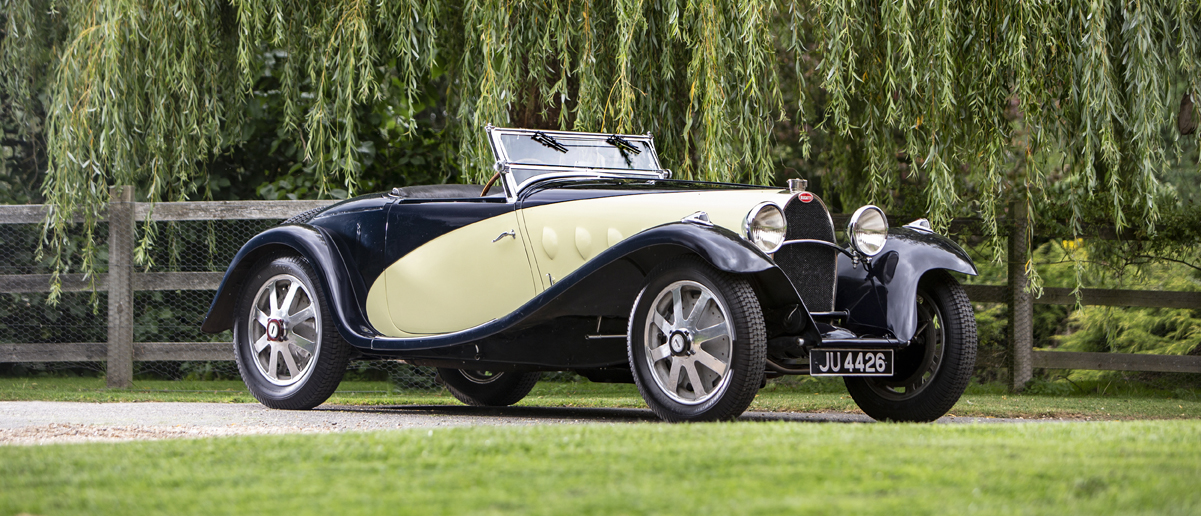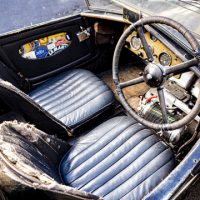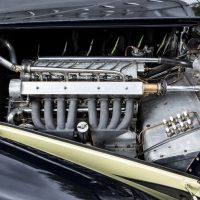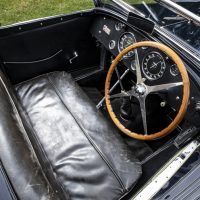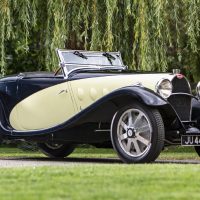SCM Analysis
Detailing
| Vehicle: | 1931 Bugatti Type 55 Supersport |
| Years Produced: | 1931–35 |
| Number Produced: | 38 |
| Original List Price: | $7,500 |
| SCM Valuation: | $4,500,000 |
| Tune Up Cost: | $6,500 |
| Chassis Number Location: | Brass plate on left-side firewall; on upper crankcase at engine rear |
| Engine Number Location: | Brass plate on left-side firewall; on upper crankcase at engine rear |
| Club Info: | American Bugatti Club |
| Website: | http://www.americanbugatticlub.org |
| Alternatives: | 1932 Alfa Romeo 8C 2300, 1935 Delahaye 135, 1933 Aston Martin Le Mans |
| Investment Grade: | A |
This car, Lot 268, sold for $5,061,380, including buyer’s premium (€4,600,000, €1=$1.097), at Bonhams’ auction in Paris, FRA, on February 6, 2020.
I have often observed the effect that not-so-quiet whisper campaigns can have on cars in the market. This is especially true when the discussion centers on opinions of originality, history or details of preservation or restoration — in other words, many, if not most of the key elements that constitute attributes of value.
I will jump to my conclusion and then work my way back. This lovely Bugatti, the highest-priced car sold during the Rétromobile auctions in Paris this year, was sold exactly where I thought it should.
In fact, I might consider it well bought.
As the star lot in its sale, Bonhams actively marketed the car prior to the auction, and I had the opportunity to see and inspect the car when it was displayed alone on their stand at the 2019 Auto e Moto d’Epoca show in Padua, Italy, in October 2019.
It immediately impressed visually — the Jean Bugatti roadster is a beautiful car, but I think that Giuseppe Figoni created a more grown-up car with the cowl-level doors. As a detuned version of the Type 51 Grand Prix car, this body seems more appropriate for a vehicle not pretending to be a racer. But therein lies perhaps the greatest appeal of this particular Type 55 — that it actually started life as a genuine competition car.
I am particularly fascinated with manufacturers who build racing and luxurious touring cars — and racing cars that are turned into touring cars. I’m also fascinated with Bugatti in general, and this vehicle in particular ticks all those boxes.
The transformation of racers into tourers also starts an interesting conversation about originality and its relationship to current value.
Dripping provenance
Clearly, our subject car’s first claim to fame, having been driven as a Works car in the 1932 Le Mans by no less than Louis Chiron, is key to its appeal. Although it only lasted three hours before dropping out with what was reported to be a fuel-tank problem, it ran well and fast while it could.
It is also well documented that this chassis was rebodied when sold to its first private owner shortly after the race. The car emerged in 1933 with the current design. The ownership history is known and documented from new, and even after receiving its touring bodywork, the car continued to impress in competition, including winning the 1933 Paris-Nice rally in March 1933. A few months later it also triumphed in concours d’elegance, at the Bois de Boulogne Concours.
The chain of ownership continues through the 1930s into the 1950s, when it was noted to have lost its original engine — but not its appeal to a series of owners through the early 1960s, including the last, who held it for 56 years and brought it back to vivid life with a correct replacement engine.
Our subject car was well known in U.K. and Continental Bugatti circles — and used and seen often.
A big accident — and rebirth
It is well known that the car suffered extensive damage during a 1994 road accident. This was the source of most of the pre-sale chatter about the car. When I saw the car in Italy last October, I spent a good deal of time underneath and peering inside to look at the frame, body panels and any of the visible wood body framing.
Without the benefit of the reports by Pierre-Yves Laugier, I could see that most of the body panels had been newly made — and that much original material remained.
The full catalog description contained more information on the state of the car than usually seen in auction-company specialist condition reports. Interested parties were told the entire story of the car — warts and all. In the end, there was very active interest and bidding on the car. As usual, the negatives came from people with no intention to buy it.
It sold to a European buyer, who had done thorough research and was making as informed a decision as could have been imagined.
For many decades, the Bugatti and Bentley worlds embraced an attitude and approach to the historic record that I find level-headed and admirable. These were cars built to be used — and used hard. As such, they were tools that required both maintenance and adaptation.
So long as everyone involved knew what was done, why, when and by whom, there wasn’t an issue. It was all part of a car’s story. Did it affect value? Sure — if a car happened to have all its original, as-built components, it was more appealing to some, who were willing to pay more.
But for Bentley Boys and the Bugattistes, a dramatic history could be far more interesting than the number stamped on the component. Continuous history is what reigned supreme.
A wonderful car well bought
Was there a discount for the story here? Perhaps — but it wasn’t what you might have expected.
In 2016, the Type 55 chassis 5513 that Achille Varzi drove in the 1932 Mille Miglia sold at Gooding & Company’s Pebble Beach sale for $10.4 million. It was said to retain its original body panels and all mechanical components.
In 2018, chassis 55201, the first Type 55, a Jean Bugatti roadster, sold at Gooding’s 2018 Scottsdale sale for $4.07 million. It had been completely rebodied during the 1960s, having lost the original body many years before.
So, between those two sales, we have an idea of the range of the market for this wonderful car.
Now, at $5 million, I would say this car’s continuous history and Le Mans credentials more than compensate for the accident repair and replacement engine.
I will actually take a step further than the one I started with and say that this car was very well bought indeed. I loved it, and so will the new owner. Well done. ♦
(Introductory description courtesy of Bonhams.)
